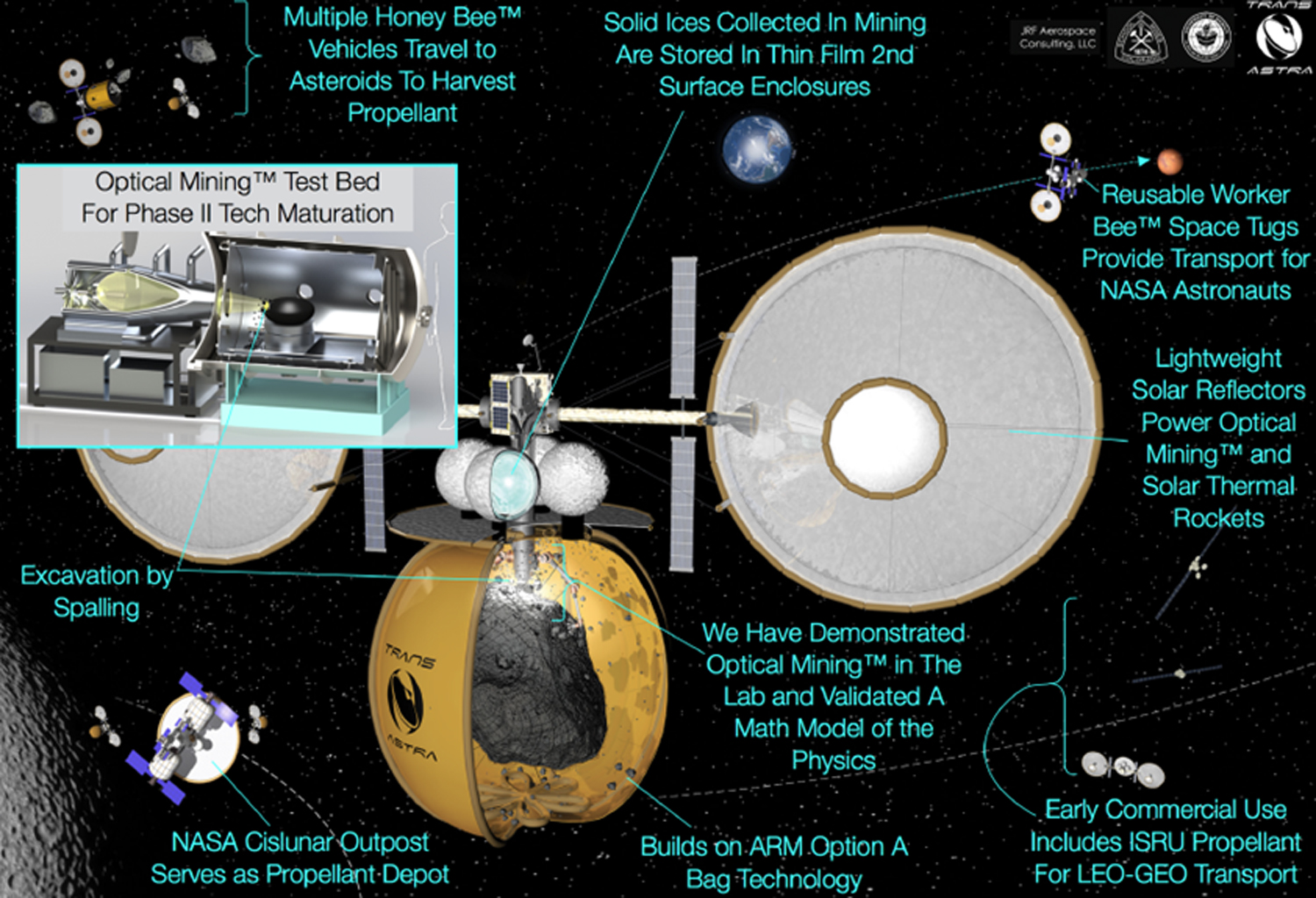Joel Sercel
TransAstra Corp.
Description

PROBLEM, DEEP SPACE HUMAN EXPLORATION IS UNAFFORDABLE:
In 2014 the NASA Advisory Council issued a finding that “The mismatch between NASA’s aspirations for human spaceflight and its budget for human spaceflight is the most serious problem facing the Agency.” Since the time of that advisory, NASA has conducted many mission and systems analyses, but has yet to publish a sustained mission plan and cost analysis that fits within any budget that Congress will approve. NASA’s vision of human exploration remains unaffordable largely due to the high cost of launching large quantities of drinking water, oxygen, radiation shielding and especially rocket propellant from Earth.
SOLUTION: OPTICAL MINING OF ASTEROIDS PROVIDES AFFORDABLE MISSION CONSUMABLES AND RADIATION SHIELDING:
An exciting program of human exploration beyond LEO might include an outpost at the top of the Earth-Moon gravity well or on the surface of the Moon; human exploration of Near Earth Objects in their natural orbits; and/or a series of human missions to the Mars system. Water, oxygen, propellant, and shielding can be made in space from resources known to be plentifully available in asteroids and probably in the Martian moon Deimos. Optical Mining technology is a breakthrough approach to harvesting these materials from asteroids, boulders, and regolith in microgravity. In Optical Mining, excavating and processing asteroid materials is accomplished by highly concentrated sunlight which we have shown can be used to drill holes, excavate, disrupt, and shape an asteroid while the asteroid is enclosed in a containment bag.
PHASE 1 ACCOMPLISHMENTS:
In our Phase 1 work we demonstrated Optical Mining in the laboratory and performed mission and systems analysis of the application of Optical Mining to human exploration missions. Our mission analysis showed that the most accessible Near Earth Objects (NEOs) can be used to provide NASA with mission consumables for human exploration in deep space with the potential of saving up to $10B/yr or $150B over the 15 year operational life cycle of a human exploration program. This savings alone would be enough to transform NASA’s vision of human exploration from being unaffordable to being affordable within budgets that Congress can approve. Phase 1 technical work included a full scale (8 kW) Optical Mining demonstration using a high fidelity CI-type asteroid simulant in vacuum using sunlight from a 10 m diameter solar concentrator without mechanical contact or downforce. This work confirmed our physics based mathematical model of the excavation and volatile extraction process and scalability of results from 36 prior, small scale (≈ 1 cm diameter) demonstrations and tests.
PHASE 2 PLANS:
In our Phase 2 work we will complete mission and system analysis of the application of Optical Mining to an exciting program of human exploration and we will mature the technology of Optical Mining to the point at which NASA can baseline this approach for an affordable program of human exploration. Our mission studies will address the production via Optical Mining missions to extract and retrieve resources, consumable processing, storage, and application of consumables to human exploration mission in cislunar, NEO and Martian space. The mission studies will be tightly coupled with our laboratory work. Laboratory work will include the development and integration of a 30 kW Optical Mining test apparatus in our laboratory and integration with our high quality vacuum chamber for a test program involving Optical Mining.





























